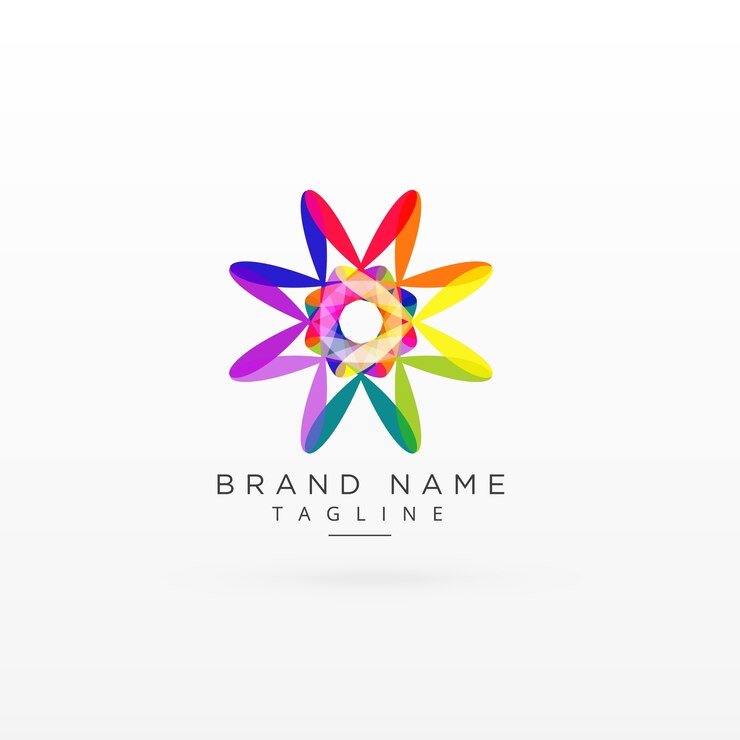The Science of Color in Logo Design

The choice of color in logo design isn’t just about aesthetics—it’s a strategic decision grounded in psychology and brand messaging. Colors have the power to influence emotions, create perceptions, and leave lasting impressions on audiences. This guide delves into the science behind color selection in logo design, covering how different colors impact consumer behavior, the importance of cultural and industry relevance, and techniques for creating a harmonious color palette that aligns with a brand’s identity. From understanding color psychology to selecting combinations that resonate, we provide actionable insights to help create logos that connect with audiences on a deeper level and reinforce brand recognition.
The Psychology of Color in Branding
- Color Associations: Each color conveys certain emotions and meanings. For instance, blue is often associated with trust and professionalism, red with excitement and passion, and green with nature and growth.
- Emotional Impact: Colors can evoke specific feelings in consumers, impacting how they feel about a brand. Choosing the right colors can create a sense of comfort, trust, or excitement, influencing brand perception.
Industry and Cultural Color Relevance
- Industry Norms: Certain industries have color trends—tech companies often use blue for trustworthiness, while eco-friendly brands lean toward green. Understanding these conventions can guide effective color choices.
- Cultural Significance: Colors can carry different meanings in different cultures. For example, white symbolizes purity in Western cultures but may signify mourning in others. A globally-minded color choice can ensure a logo resonates across regions.
Color Combinations and Harmonies
- Complementary Colors: Combining colors from opposite sides of the color wheel, like blue and orange, can create visual contrast, making a logo stand out.
- Analogous Colors: Colors close to each other on the color wheel, like blue and green, create harmony and a cohesive feel, often suitable for serene and professional brands.
- Triadic Colors: A triadic color scheme (using three colors evenly spaced on the color wheel) can give a logo a balanced and vibrant look, often suitable for dynamic brands.
Color Psychology in Logo Design
- Warm vs. Cool Colors: Warm colors (red, orange, yellow) evoke energy and warmth, while cool colors (blue, green, purple) create calmness and trust. The choice between warm and cool tones influences the brand’s personality.
- Gender Preferences: Studies show gender preferences in color choices—blue tends to appeal to both genders, while purple often resonates more with female audiences. Understanding these preferences can guide effective color use.
The Role of Neutral Colors
- Supporting Colors: Neutral colors (black, white, gray, beige) play a supporting role in logo design. They balance brighter colors and add sophistication without overwhelming the primary brand colors.
- Modern and Minimalistic Appeal: Neutral tones are often used for minimalist brands aiming for a clean, modern look that emphasizes simplicity and elegance.
Color and Brand Recognition
- Consistency for Recognition: Consistent use of color across all branding materials helps strengthen brand recognition. For example, Coca-Cola’s red and McDonald’s yellow are instantly recognizable and connect emotionally with their audiences.
- Brand Recall: Research shows that color can improve brand recognition by up to 80%. A unique color palette is key to creating a memorable and distinctive brand presence.
Creating a Balanced and Memorable Palette
- Primary and Secondary Colors: Define a primary color that represents the brand’s core identity, supported by secondary colors that add depth and flexibility to the logo.
- Balance in Use: Use colors thoughtfully to avoid overwhelming the logo. A well-balanced palette helps communicate the brand’s message without distraction.
Testing and Refining Color Choices
- Audience Feedback: Gather feedback from target audience groups to understand how the logo colors are perceived. This ensures the colors align with brand values and resonate with potential customers.
- Color Testing Across Platforms: Test how colors look on different devices, backgrounds, and in both digital and print formats. Ensuring colors stay consistent and vibrant in all contexts is essential for a professional logo.














